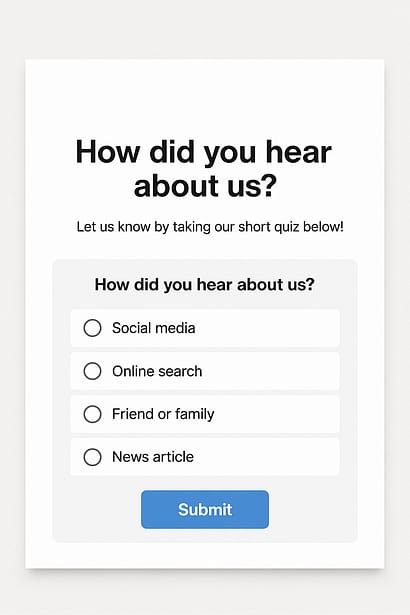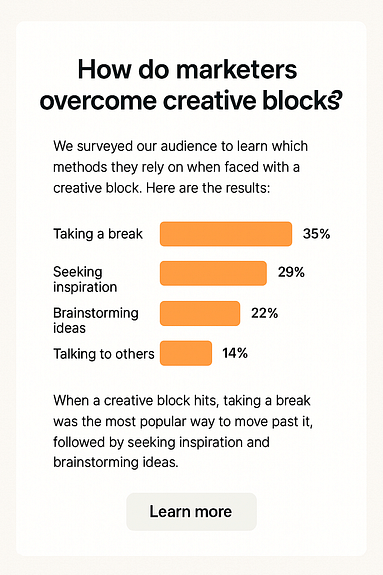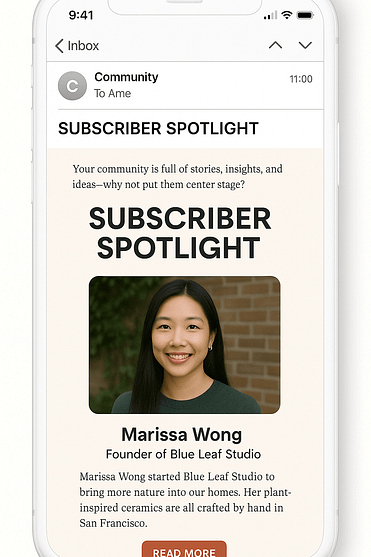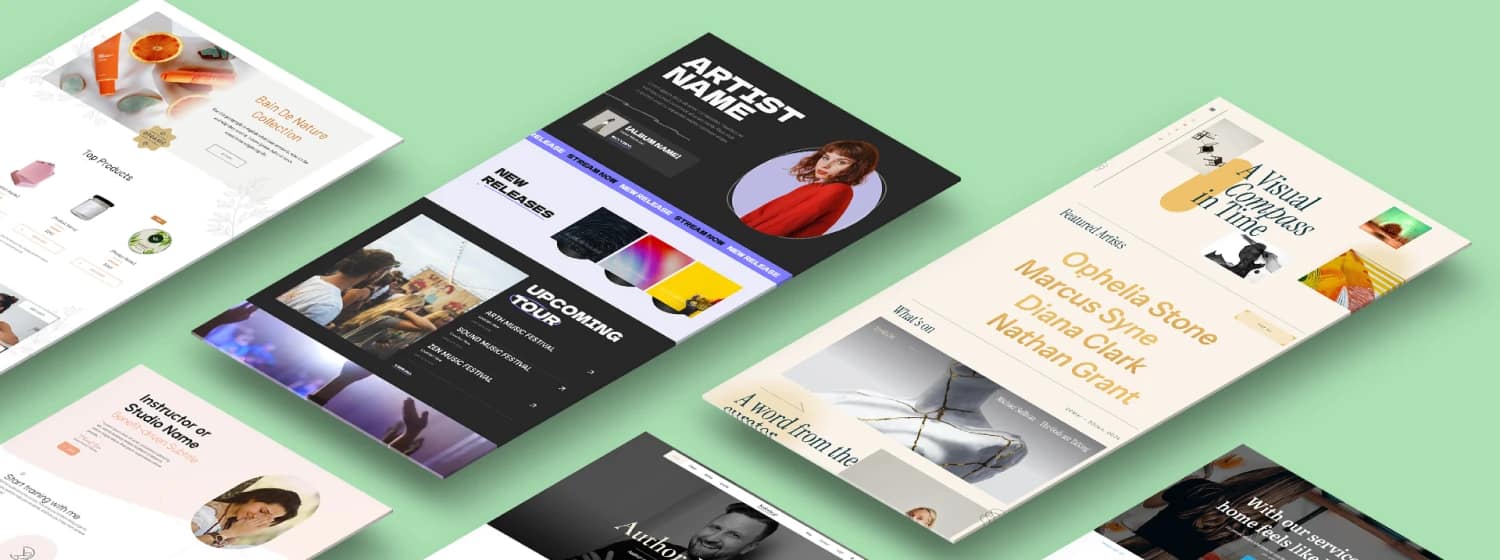What if your newsletter became the one email your audience wanted to open each week?
That’s the goal, right? Not another chore on your to-do list, not another marketing task to check off. It should be a space where your subscribers lean in, click through, and actually look forward to hearing from you.
I know how easy it is to get stuck. You want to send something meaningful, but the ideas run dry. That’s why I pulled together this guide that includes the strategies I use to build trust, show authority, and still drive revenue.
By the end, you’ll have 10 formats you can turn to whenever inspiration fades, plus the confidence to send consistently without second-guessing yourself.
Before You Write: Remember the 90/10 Value Rule
If I could tattoo one email marketing principle on every marketer’s wrist, it would be this:
The Golden Rule of Email Marketing: 90% value, 10% promotion
That means your newsletter should mostly feel like a gift. I’m talking educational tips, a resource worth bookmarking, a quick spark of inspiration, even a laugh on a hard day.
The other 10%? That’s where you gently remind your audience you’ve got products, services, or offers that can help them go further.
Why does this matter? Because no one signs up for a newsletter hoping for endless sales pitches. The moment your emails start feeling like flyers stuffed in a mailbox, people tune out – or worse, unsubscribe. The 90/10 rule keeps your focus where it belongs: making your reader’s day better. And when you do that consistently, the promotions you do share land with a lot more weight.
The Hidden Truth: Great Newsletters Start With Great Leads
Let me be blunt: if the wrong people are on your list, none of your brilliant newsletter ideas will land. I’ve written emails that I thought were gold, only to watch them flop—because the audience wasn’t right.
When you attract the right subscribers, everything changes:
The Lead Generation Shift
That shift happens before you ever sit down to write. It starts with your lead generation strategy. Your website isn’t just about capturing emails—it’s about capturing the right ones. That means:
- Smart, well-placed forms that match your visitor’s intent.
- Offers that qualify your leads instead of attracting freebie hunters.
- Interactive quizzes that segment people by what they actually want.
This is why I lean on Thrive Suite. It lets me build forms, create quizzes, and deliver offers that bring in subscribers who are genuinely interested. And when those people get my emails, they don’t feel like random broadcasts—they feel like conversations.
Bad leads drain your energy. Great leads turn your newsletter into a growth engine. And the difference isn’t luck—it’s the strategy you use on the front end.
Actionable Step: Upgrade Your Lead Strategy
👉 Build your list the right way with Thrive Suite. I use it to design high-converting forms, run interactive quizzes, and segment subscribers so my newsletters actually land with the right people. If you’re serious about turning your emails into a real growth engine, Thrive Suite gives you everything you need—templates, tools, and the flexibility to make your lead gen strategy work on your terms.
10 Proven Newsletter Ideas Your Audience Will Love
When you’re stuck, a list of ideas can feel like a lifeline. But I don’t want to just throw you ten random prompts and call it a day.
Each idea here comes with context: why it actually works, how you can make it resonate with your audience, and a practical way to put it into action. I’ll also point out where Thrive tools can help you execute faster and more beautifully – because strategy is great, but implementation is what gets your emails out the door.
Think of this as your swipe file for those blank-screen days. Open it, pick an idea, and know you’ll send something that adds value and strengthens your business.
1. Curated Roundup That Saves Time
If there’s one thing your readers don’t need more of, it’s tabs open in their browser. We’re all swimming in industry blogs, podcasts, YouTube rabbit holes, and social threads. The problem isn’t access to information—it’s deciding what’s actually worth consuming. That’s where you come in.
A curated roundup positions you as the “editor” your subscribers didn’t know they needed. Instead of sending them 20 links to sift through, you handpick the 3–5 that will actually help them grow, save time, or spark ideas. The value isn’t just in the content you share—it’s in the trust you build. Over time, readers start to rely on you as the filter who keeps them sharp without overwhelming them.
Why it works:
How to put it into practice: Curated Roundup
- Decide on a theme (e.g., “This week’s top 3 email marketing tools” or “5 articles that will make you rethink content strategy”).
- Write a one-sentence takeaway under each link. Don’t just share—interpret. Example: “This 10-minute video breaks down why most popups fail and how a small tweak doubled conversions.”
- Keep the format consistent so subscribers know what to expect each time.
💡 Pro tip: A simple link dump looks sloppy. Focus on designing neat content blocks with a headline, a short blurb, and a button. When readers can scan quickly and see the value at a glance, they’re much more likely to click—and return for the next roundup.
2. Behind-the-Scenes Story That Builds Trust
Your subscribers see the polished end result: the campaign that launched smoothly, the new feature that looks seamless, the brand that feels put-together. What they don’t see is the messy, real, human process that gets you there. And that’s exactly what makes behind-the-scenes content so powerful.
Sharing a glimpse of your process, team, or workspace creates intimacy. It breaks down the wall between “business” and “audience,” showing readers there are real people behind the brand. It doesn’t have to be glamorous. Sometimes the most relatable stories come from the unexpected—like the time your internet cut out during a webinar or the ten versions of a sales page headline you scrapped before finding the one that clicked.
Why it works:
How to put it into practice: Behind-the-Scenes
- Share a photo of your workspace and explain one small detail that inspires you.
- Walk readers through a challenge your team faced and the lesson you took from it.
- Give a sneak peek at how a product or campaign comes together—warts and all.
Example: Instead of just announcing your new funnel, tell the story of how you tested three different opt-in offers, what failed, and the surprising angle that finally worked.
Pro tip: Layer your storytelling with visuals—drop in a candid team photo, a quick Loom screenshot, or even a timeline graphic. The mix of words and imagery makes your email feel like an exclusive peek into your world.
3. Quick Win Tutorial That Solves a Problem
Sometimes the most effective emails aren’t long, sweeping guides—they’re the ones that hand your reader a tool they can use right now. That’s what a quick win tutorial delivers: one small, actionable tip with an immediate payoff.
Your subscribers don’t always have time to sit down for a masterclass, but they do have time for a three-minute read that makes their workday easier. Think of it as the email version of a “life hack”—short, useful, and worth forwarding to a friend.
Why it works:
How to put it into practice: Quick Win Tutorial
- Choose one small but common problem your audience struggles with.
- Show them a clear, step-by-step way to fix it in just a few clicks or minutes.
- End with a prompt that encourages them to try it immediately.
Example: “Add a progress bar to your landing page in three clicks. Here’s how: open Thrive Architect, drag in the progress bar element, and link it to your opt-in form. Done.”
Pro tip: Pair your tutorial with a short GIF or screenshot inside the email. It’ll make your tutorial even easier to follow.
4. Audience Q&A That Shows You’re Listening
Nothing says “I see you” like answering a reader’s actual question in your newsletter. Instead of guessing what your audience cares about, let them tell you directly—and then showcase your response for everyone’s benefit.
This format scales beautifully. One subscriber asks, but hundreds more get value from your answer. It transforms your newsletter into a two-way conversation instead of a one-way broadcast. Over time, readers start to believe: If I hit reply, they’ll actually listen.
Why it works:
How to put it into practice: Audience Q&A
- Collect questions through a poll, survey, or by inviting replies at the end of an email.
- Select one strong question that represents a common pain point.
- Answer it in detail, weaving in your own expertise, tools, and recommended next steps.
- End with a CTA: “Got a question too? Hit reply—I read every one.”
Tip: Use Thrive Quiz Builder to capture subscriber questions at scale. You can ask, “What’s your biggest challenge with [topic]?” and feed those insights directly into your newsletter plan.
5. Myth-Busting Email That Establishes Authority
Every industry has its sacred cows—those “rules” that get repeated so often people stop questioning them. That’s why a myth-busting email stands out: it challenges the status quo and positions you as the voice of reason.
Instead of piling on more generic advice, you cut through noise by saying: “Actually, that’s not true—and here’s why.” It’s bold, it’s refreshing, and it makes subscribers trust you as someone who’s not afraid to tell the truth.
Why it works:
How to put it into practice: Myth-Busting
- Identify one misconception in your niche that’s holding people back.
- Break it down simply: state the myth, explain why it’s wrong, and provide the better approach.
- Keep it conversational—your goal is to guide, not scold.
- Bonus: back it up with data, a case study, or a personal example.
Example: “Why longer emails often outperform short ones—because context builds trust, and trust drives clicks.”
6. Mini Case Study That Demonstrates Results
There’s nothing more persuasive than proof. A mini case study gives your readers a peek into how an idea, strategy, or product played out in the real world—whether it’s your own win or a customer’s story.
The key is to keep it simple: the challenge, the approach, and the result. Readers don’t want a 10-page report; they want to see what’s possible for them.
Why it works:
How to put it into practice: Mini Case Study
- Choose a relatable example—something your readers can see themselves in.
- Share the problem, the process, and the payoff in 3–4 tight paragraphs.
- Focus on the transformation, not just the numbers.
- Add a subtle link to the product, tool, or service that made the result possible.
Conversion tip: If you’re highlighting how a Thrive theme boosted conversions, link directly to that tool. Position it as the natural next step, not a hard sell.
7. Best-Of Digest That Keeps Readers in Your Ecosystem
You’ve probably published more great content than your audience has time to consume. A “Best Of” digest pulls it all together, making sure subscribers never miss your most valuable pieces.
Think of it as the highlight reel of your brand—your top-performing blog posts, podcast episodes, or videos from the last month or quarter. For a reader who might have skipped one or two, this roundup is a second chance to engage.
Why it works:
How to put it into practice: Best-Of Digest
- Pick 3–5 top posts or resources, ideally ones with high engagement already.
- Frame each one with a benefit-driven headline and short summary.
- Group them around a theme if possible (“Most-read content marketing guides this month”).
- Use internal linking smartly—to blog posts, lead magnets, or sales pages—to keep readers moving deeper into your ecosystem.
8. Sneak Peek That Builds Anticipation
Everyone loves being the first to know. A sneak peek email lets your subscribers feel like VIP insiders with access to something new before the rest of the world sees it—whether it’s a course, a product, or even just a feature you’re rolling out.
Done well, this kind of email isn’t just about informing your audience. It’s about rewarding loyalty and sparking excitement. Even if they don’t buy immediately, they’ll remember that you trusted them with early access.
Why it works:
How to put it into practice: Sneak Peek
- Share a screenshot, teaser video, or short walkthrough.
- Emphasize the benefit of the new thing, not just its features.
- Make it time-bound: “Subscribers get early access until Friday at midnight.”
- Drive clicks with urgency—highlight limited spots, bonuses, or a closing window.
9. Resource Drop That Delivers Tangible Value
Few things feel more generous than dropping a ready-to-use resource straight into someone’s inbox. Templates, checklists, swipe files, worksheets—these are the kinds of assets your subscribers will download, save, and keep coming back to.
Unlike theory, a resource drop gives immediate, hands-on value. It’s the type of content that makes readers say, “This newsletter is actually helping me do my work better.”
Why it works:
How to put it into practice: Resource Drop
- Create a simple checklist, template, or guide that solves a recurring problem.
- Deliver it as a downloadable PDF or a Google Doc.
- Frame it as exclusive: “This is for subscribers only.”
- Encourage readers to reply and let you know how they used it—you’ll get both engagement and feedback.
Tie-in: With Thrive Suite, it’s easy to design branded templates and lead magnets. Build the resource once, then use it as both a newsletter drop and a conversion asset across your site.
10. Personal Reflection That Builds Connection
Not every newsletter needs to be a tutorial or a roundup. Sometimes the most powerful emails come from you simply sharing your own perspective—your take on an industry trend, a shift you’ve noticed, or even a personal lesson you’ve learned the hard way.
This isn’t about oversharing or turning your email into a diary. It’s about pulling back the curtain just enough to let readers see the human behind the brand. A story about a failed experiment, a risky decision, or a surprising insight will often resonate more deeply than another “top 5 tips” list—because it feels real.
Why it works:
How to put it into practice: Personal Reflection
- Pick one clear moment: a campaign that flopped, a trend you initially resisted, or a lesson you learned from a client project.
- Frame it as a story: set the scene, describe the tension, share the takeaway.
- Tie it back to your reader: what can they learn or apply from your reflection?
- End with an open invitation: “Have you experienced something similar? Hit reply—I’d love to hear it.”
Example: Instead of saying, “Always A/B test your headlines,” tell the story of the time you launched a sales page you loved, only to learn that the “uglier” variation doubled conversions. Readers will not only remember the lesson, they’ll remember that you had the humility to share it.
Out-of-the-Box Bonus Ideas
Most marketers stop at the basics—roundups, tutorials, updates. But if you really want to stand out in the inbox, you need to experiment with ideas that surprise your readers and deliver an experience they won’t get from a competitor’s newsletter. Here are three ways to push your content further:
1. Embed Interactive Polls or Quizzes Inside Emails
Why just talk at your audience when you can engage them directly? An embedded poll or quiz transforms your newsletter into an interactive experience. Instead of skimming and deleting, subscribers get to click, answer, and see results.

2. Share Proprietary Data or Original Research
Everyone’s curating industry stats. Almost no one is creating them. That’s your opportunity. Conduct a quick survey of your audience, share aggregated data from your business, or analyze trends you’ve noticed. Then package it into a clean, snackable story.

3. Feature Reader-Driven Content (Subscriber Spotlight)
Your community is full of stories, insights, and ideas—why not put them center stage? A subscriber spotlight highlights one of your readers, their work, or their story. It doesn’t just engage that person—it makes *everyone* feel like they could be next.

Frequently Asked Questions About Newsletter Content Ideas
A newsletter’s core purpose is to build and nurture a direct relationship with your audience—on a platform you own. Unlike social media, where algorithms control reach, newsletters let you connect one-on-one in the inbox. Done right, they establish trust, deliver consistent value, and keep your brand top of mind while also supporting long-term goals like sales, authority, and community.
Start with your audience itself. Use polls, surveys, or a simple “hit reply” question to uncover what they want to learn. Repurpose your best-performing blog posts, videos, or social content into shorter email-friendly versions. Watch your industry closely—comment on news, trends, or competitor moves. And keep a running “idea bank” where you drop FAQs, insights, and reader feedback so you’re never starting from scratch.
There’s no magic number—it depends on your capacity to deliver value consistently. Weekly is common, but monthly can work just as well if quality is high. What matters most is consistency: readers should know when to expect you. To fine-tune, ask your subscribers how often they’d like to hear from you, and then stick to a predictable schedule.
Length isn’t the deciding factor—value is. Some audiences love a two-minute “quick win” format, while others prefer a deep-dive essay. The best approach is to choose a format, test it consistently, and watch your engagement metrics. If open rates are steady and readers click or reply, your length is working. If engagement drops, adjust.
Keep subject lines clear, compelling, and consistent with your brand voice. Avoid vague teasers—promise value and deliver it in the email. Test formats like questions, numbered lists, or curiosity-driven statements. Remember: clarity beats cleverness. Also, check how your subject lines appear on mobile, where character counts are tight.
While it varies by audience, research shows subscribers consistently value:
- Educational how-to guides and quick tips
- Curated roundups of useful resources
- Behind-the-scenes insights and stories
- Announcements about new products or features
The common thread? Content that solves problems, saves time, or makes readers feel like insiders.
Incorporate elements that invite participation. Add polls, quizzes, or surveys that let readers share opinions or feedback. Ask direct questions and encourage replies. Run contests or challenges that spotlight subscriber contributions. The goal is to shift from a broadcast to a conversation—when readers feel involved, they’re more likely to stick around.
Go beyond open rates. Track click-through rates, reply rates, and conversions (sign-ups, purchases, downloads). Pay attention to unsubscribes—spikes can signal you’re sending content that’s off-target. And don’t overlook qualitative metrics: reader replies, testimonials, and feedback that show your newsletter is genuinely useful.
Copy comes first. A plain-text email with valuable content will always outperform a beautifully designed one with little substance. That said, clean, mobile-friendly design enhances readability and professionalism. Aim for a balance: strong writing supported by simple, user-friendly design. Don’t let visuals delay your ability to send.
First, create content so valuable people want to share it—unique insights, actionable tools, or entertaining stories. Then make sharing easy: include social sharing buttons and a “forward to a friend” link in your template. For an extra push, consider adding a referral incentive (like early access, discounts, or a free resource) for subscribers who bring in new readers.
Conclusion: Turn Ideas Into Action
If you’ve ever worried about running out of things to say, you can let that go. With these strategies in your back pocket, you’ll never run out of newsletter content again. The ideas are endless—you just need the right lens to see them.
Remember, the real magic isn’t in the list itself. It’s in how consistently you show up, how much genuine value you bring, and how willing you are to add a little creativity to keep readers engaged. That combination—consistency, value, creativity—is what turns a “weekly email” into a long-term relationship your subscribers look forward to.
So here’s my challenge: don’t just bookmark this guide. Pick one idea today—maybe a quick win tutorial or a behind-the-scenes story—and build your next send around it.
And if you want to make the whole process easier (and more fun), use Thrive Suite to design beautiful templates, add interactive elements, and deliver resources your subscribers will love.
Your next newsletter is one decision away. Make it count.


